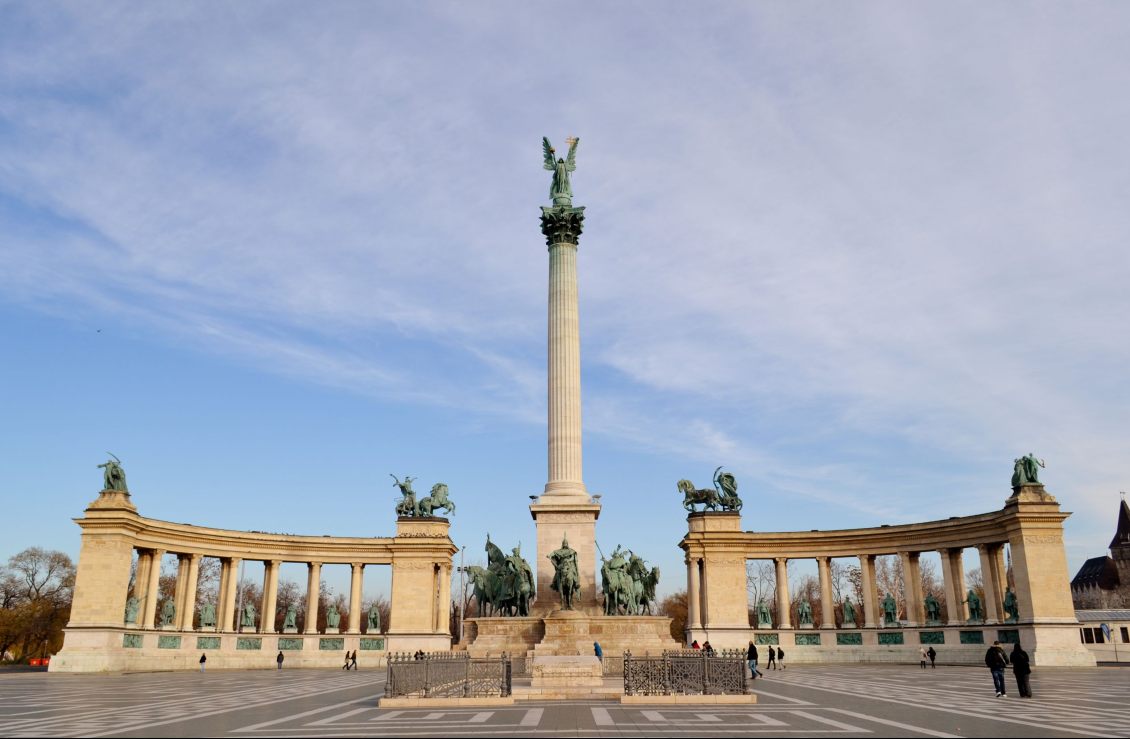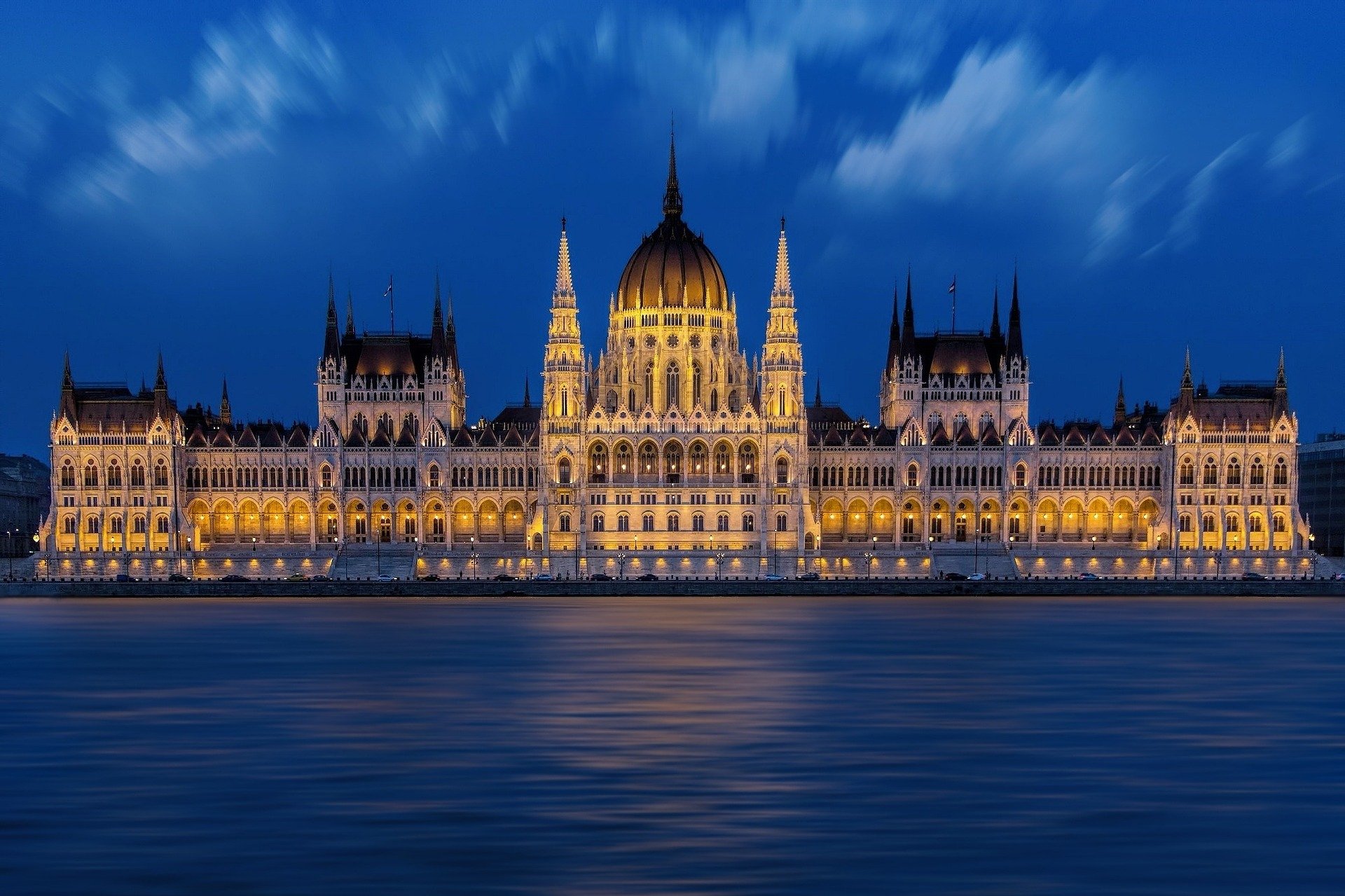Must Visit Attractions
ANDRÁSSY AVENUE
Acting as the “Champs-Elysées” of Budapest, Andrássy Avenue is not only one of Pest’s most elegant and well-known streets, it's also a UNESCO World Heritage Site flanked with impressive 19th century buildings. It stretches 2.5 kilometres from the bustling Erzsébet Square to the proud Heroes’ Square, with Budapest’s green lung - City Park - at the very end. This elegant boulevard, named after former Prime Minister Gyula Andrássy, is home to Budapest’s buzzing theatre district, shop windows carrying brands such as Louis Vuitton, Burberry and Max Mara, decadent and bohemian cafés, and villas housing embassies. Looking up to discover the Eclectic-style apartment buildings and palaces that were once home to aristocrats and noble families, makes it worth the walk, even though the Millennium Underground runs beneath the entire avenue.
CHAIN BRIDGE
.jpg?1624456196219)
The Chain Bridge is not only the icon of Budapest, a national symbol that shows the city divided and connected by the river Danube, it is also one of the most photographed attractions of the Hungarian capitol. Built by the British architect William Tierney Clark, Chain Bridge was the first permanent bridge in Budapest, and it was the longest suspension bridge in Europe. Chain Bridge stretches between the Castle Hill on the hilly Buda side and the Gresham Palace on the Pest side. There are a number of delightful bridges in Budapest, but this is the oldest, and as you walk toward it, no other bridge in Budapest tells you so emphatically that you have arrived in the heart of the city. And no other bridge „demands that you walk across it”, quite as much as this memorable bridge.
CITADEL
Although for many it used to be a symbol of repression for a long time, today the Citadel is one of the most popular tourist sights in Budapest. The building is 220 metres long and 60 metres wide. When constructed the 4-meter-high walls were equipped with 60 cannons, although they were never used except for ceremonial shooting. Proudly standing atop Gellért Hill, the Liberty Statue (nicknamed “Bottle Opener”) is one of the most famous landmarks of Budapest. It was erected in 1947 in remembrance of the Soviet army which liberated Hungary from German occupation in front of the south-eastern bastion of the Citadel. The statue itself (designed by Zsigmond Kisfaludi Stróbl, depicting a woman holding a palm leaf over her head) is 14 metres tall, and comes with a 26 metres high pedestal overlooking the city from a total height of 275 metres. From atop the walls of the Citadel there is a stunning view over the city. No wonder that in 1987, UNESCO recognized Gellért Hill, together with the view from its top over the Castle Hill and both banks of the Danube as a UNESCO World Heritage Site.
HEROES’ SQUARE

One of the city’s main landmarks and the gateway to the City Park, Heroes’ Square bookends elegant Andrássy Avenue. Construction began in 1896, when citywide developments marked the millennial celebrations of the foundation of the Hungarian state. Two colonnades display 14 emblematic figures from Hungarian history, and form a semi-circle around the centrepiece column, which itself is surrounded by the seven original Magyar chieftains and topped by the Archangel Gabriel. Flanking each side of the square are two major cultural institutions: the Museum of Fine Arts, completely revamped and reopened in 2018, and the Kunsthalle, home of temporary exhibitions of mainly, contemporary art.
HOUSE OF PARLIAMENT

Sitting magnificently on the banks of the Danube river, the House of Parliament is not only one of the oldest legislative buildings in Europe, it’s also the largest building in Hungary. Selected as a World Heritage site as a central element in the Danube panorama in 2011, it provides a home for the legislature, a place of safekeeping for the Hungarian Holy Crown, and a workplace both for the 199 Members of Parliament and for the nearly 600 people who assist them. The wing that runs parallel to the Danube is 268 metres long, with the greatest width at 123 metres. The dome with its turret leaps into the sky at a height of 96 metres. During the visit guest are shown the Chamber of Peers and the lounge of the Chamber of Peers. The geometric centre of the building and the symbolic centre of Hungary is the 27 metres tall Dome Hall. This is where the Hungarian Holy Crown and the Coronation Insignia, among the oldest coronation regalia in Europe, have been kept since 1 January 2000. The other pearl of the building is the Grand Stairway. The 96 stairs that dominate the space covered with red carpeting leads from the main entrance to the Dome Hall.
Groups depart from the Visitor Centre to take a tour through the most beautiful rooms in the building. Tourist guides present one of the most beautiful Parliament buildings in 7 languages: English, French, Hebrew, German, Russian, Italian and Spanish. The duration of the visit including the security check is about 45-50 minutes.
FISHERMAN’S BASTION

Imagine Disney’s Sleeping Beauty castle. That’s pretty much what Budapest's Fisherman’s Bastion looks like. It’s a fairy tale building: its world famous turrets, spires, parapets and climbing stairways provide perhaps the most beautiful panorama of the city from the Buda side over the river Danube and its attractions in Budapest. The 7 turrets represent the 7 Hungarian tribes who founded the present day country in 895. The 140 metres long wall and bastion complex, along with Buda Castle, the river views and the Danube riverfront are part of a UNESCO World Heritage site. Between Fisherman's Bastion and Matthias Church stands the statue of the first Christian king of Hungary, St. Stephen.
SHOES ON THE DANUBE BANK
The Shoes on the Danube Bank is a memorial statue by film director Can Togay and sculptor Gyula Pauer, created to honour the people killed by Fascist militiamen in Budapest during World War II. The installation is made up of 60 pairs of period-appropriate iron shoes, representing the victims who had to take their shoes off before execution, leaving them behind on the riverbank. In 2017 the statue was ranked second among the world’s most fascinating public sculptures by America’s prestigious Architectural Digest magazine.



